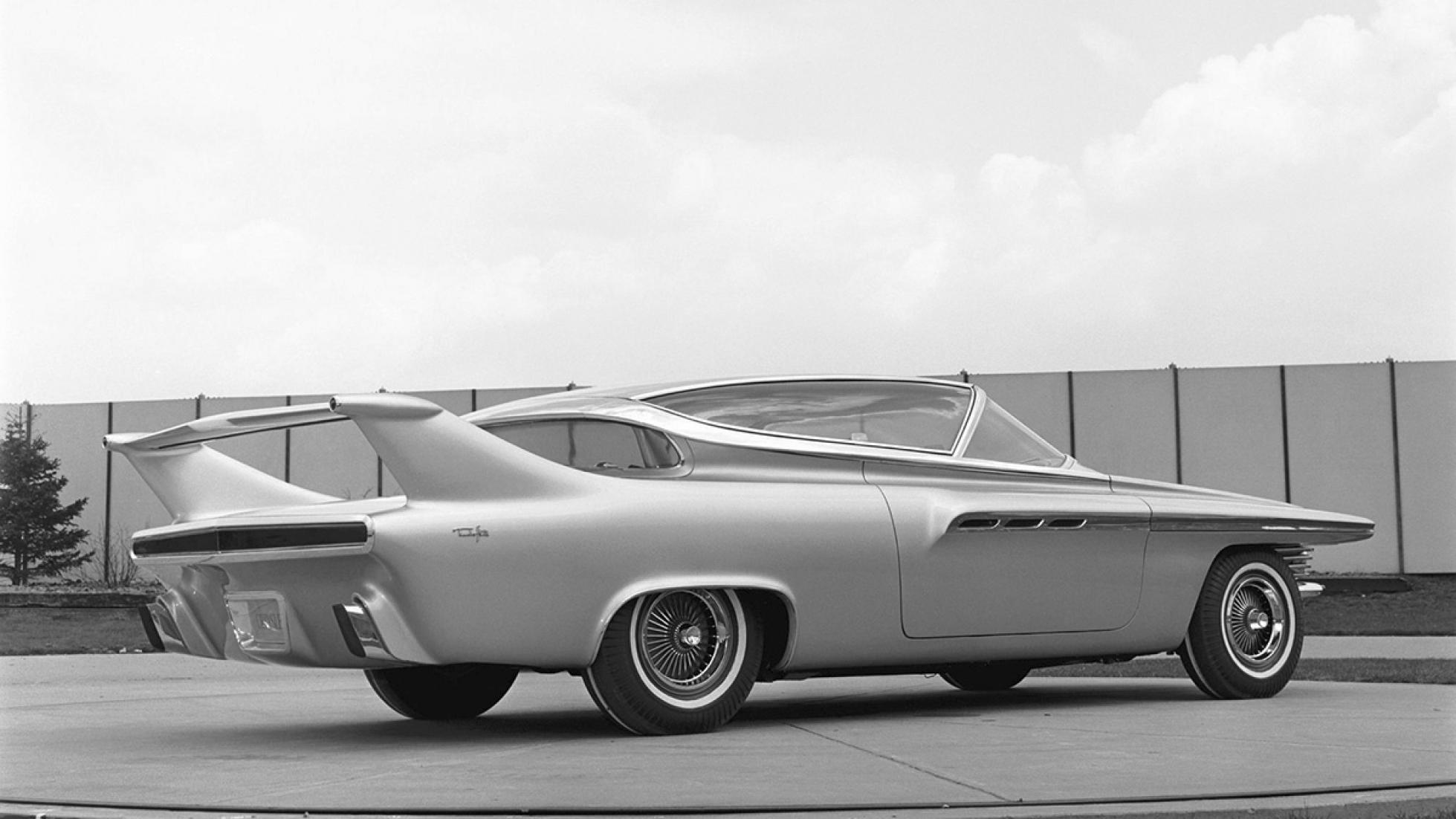
What is this incredible Flite of fancy?
Post-World War II, the fighter jet was king. Boys dreamed of being pilots, and girls dreamed of marrying them. Carmakers wanted to bask in the reflected glory.
Among them, Chrysler first came up with a turbine-engined car in 1954 by dropping a turboshaft unit into a standard Plymouth road car. Things got more sophisticated, until in 1961 Chrysler came up with this concept, the TurboFlite.

Ah, they don’t make ‘em like they said they were going to.
The TurboFlite concept was penned by Virgil Exner, Chrysler’s head of design. It was styled under his ‘forward look’ style, using the latest aerodynamic knowhow and borrowing heavily from the world of aviation with fins galore.
It was meant to be futuristic, but ironically this would be one of Exner’s final designs for the company, which defaulted to a more conservative design afterward. The TurboFlite was built for Chrysler by Ghia in Turin, and was intended to push the boundaries as befits a turbine-powered automobile of the era.

Why would anyone want to stick a turbine engine in a car?
Well it’s all very fascinating – on the one hand you’ve got the glamour of the jet age and the freedom that comes with it, and from an engineering point of view a turbine is better than a piston engine because there are fewer moving bits to go wrong.
On the other hand they are much less flexible than traditional piston engines (there was a 1.5sec pause between hoofing the accelerator and anything happening) and you’ve got a lot of heat to deal with. But back on the other hand, jet planes!

What’s going on with the roof?
Glad you asked – the TurboFlite’s roof was a real party piece, coming straight out of left field. It automatically raised when you opened either of the doors, lifting the windscreen and side windows with it.
Conventional doors ensured access to the rear seats. Of course, the design meant normal windows couldn’t be used, but Chrysler did mount the side ones on roof hinges to get a bit of air in the cabin.
And of course, a year after the TurboFlite’s debut, space-age cartoon sitcom The Jetsons aired on American TV for the first time… coincidence?

What other concept car flourishes are there?
The interior of the car – or cockpit, if you will – sports a relentless aircraft theme, with aluminium-accented seats, huge throttle and brake pedals (the designers thought it would be safer if the driver had to rest their foot on the brake, it would make them more responsive) and an instrument panel with a series of plane-style dials. As well as the speedo you got a turbine inlet temperature gauge on the dash.
The front end of the TurboFlite was slimmed down to cut drag, to the extent that outer headlights tucked in underneath the outboard wings when not needed.

Check out that massive rear wing…
The rear wing wasn’t merely a styling flourish, it actually served a functional purpose on the TurboFlite – not adding downforce, but rather it flipped up and acted as a crude, early form of airbrake when the driver stomped on the second pedal. No engine braking from a turbine, you see…
As it turns out, we should all be grateful for the massive rear wing – not only did it inspire later muscle cars, but Chrysler’s efforts making the airbrake work on the TurboFlite have led to cars like the Bugatti Veyron and McLaren P1, which wouldn’t have been anywhere near as effective without their aero-powered stoppers.

Did Chrysler ever put the TurboFlite into production?
Chrysler launched a far more ordinary-looking car with a fourth-generation version of its turbine engine in 1963. Members of the public were given 50 of the cars to test and racked up over a million miles of testing.
Chrysler was genuinely looking at putting the engine technology into series production before the Seventies oil crisis finally killed it off.

Whatever happened to turbine-powered cars?
Fiat and General Motors also played around with the idea of a turbine-powered car, but these never got past the concept stage. Even Rover had a play with turbine power as early as 1950, and even entered an experimental car to Le Mans in 1963 in conjunction with F1 team BRM.
The closest and coolest we’ve got to a proper production turbine-powered car was the Jaguar C-X75 concept, presented at the 2010 Paris motor show. It used the best features of the turbine tech to generate power for electric motors and very nearly made it to production. But didn’t. Oh well.
STORY Sam Burnett









